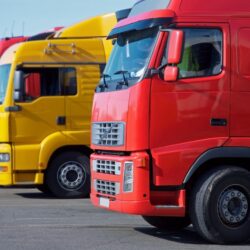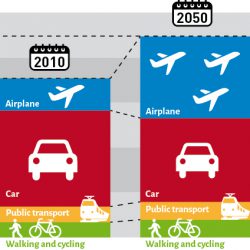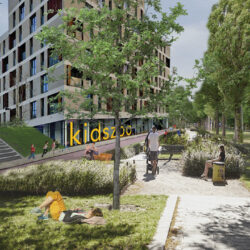Logistics cause 11% to 12% of global CO2 emissions. Road transport accounts for around two thirds of this. Even with the fastest possible switch to electric trucks, the logistics industry is not on track to reduce greenhouse gas emissions to zero by 2050. In Europe,… Read More
‘Transport poverty’ is a new buzzword. I recommend no longer using this. There is certainly poverty in the Netherlands, because we have food banks and thirty-two thousand ‘registered’ homeless people, in reality more. Six percent of Dutch population lives below the poverty line, and this must change. But better transport hardly contributes to this. Urban densification does help, because the distances in cities are short, making much of it accessible by bicycle. A tailor-made bus also helps. Practical solutions for people in trouble are good; a general policy against transport poverty only distracts from the real problems.
Higher wages and social benefits are the obvious way to tackle poverty, but we are talking about transport poverty and energy poverty. There is a good chance that good intentions will get bogged down in conferences and policy papers. The transport poverty frame naturally creates a tendency to offer better transport facilities and make mobility cheaper. As the government unfortunately did when it lowered fuel taxes. The wealthy benefited the most and environmental pollution did not decrease because the price of energy was lowered.
Urban densification is also beneficial. People with little income have better accessibility in cities than in suburbs or in rural areas. If they live in Amsterdam, they can reach two to four times as many workplaces than if they live outside the city. This is mainly due to the short distances in the city, which requires less (expensive) mobility by car or public transport. Policies that allow people with little money to (continue to) live in cities simultaneously ensure sufficient accessibility for them.
New bus lines also help, when they connect residential areas with a low average income to industrial estates where people with practical professions work. These buses should also run at times when shifts change. People with practical professions cannot work from home, do not have a company car and of the twenty percent of households with the lowest income, two-thirds do not have a car. This ‘dedicated bus’ is a missing link in the current mobility policy.
Improvements in disadvantaged neighborhoods should also deal with accessibility. Mediating for work includes the opportunity to get there. An inexpensive bicycle plus the skill to use it is an important first step. Then regular public transport and the ‘tailor-made bus’ come into the picture. In neighborhood improvement progammes, reality drives the solutions focussed at support for people below the poverty line.
A regular response to my plea against the use of the term ‘transport poverty’ is that it does exist in small towns: “In the countryside, half of the smaller towns are not accessible without a car in the evenings and at weekends”. Whether this should be addressed with policy depends on three considerations:
- It’s about accessibility and not transportation. If the village has all the basic facilities, then I don’t think there is any ‘accessibility poverty’. If these basic facilities are not available, a better solution may be to bring them back.
- It is about poverty and not about residents with middle or high incomes. Most poor people live in the cities and not in the countryside. Car ownership is also highest outside the cities. This does not deny the fact that there are also poor people without cars living in small towns. I see customization as a solution and not a general transport offer.
- These are people who have not voluntarily moved to a ‘car-dependent’ place. The consequences of choosing a residential location with few facilities and transport options are at your own expense. Moving is a possible solution. This is different for people stuck in a ‘car-dependent’ place. A tailor-made solution is also needed for them.
The above emphasizes to me that the ‘transport poverty’ frame misleads us. Solutions other than transport are wrongly left out of the picture. Customized solutions are needed to ensure accessibility for people with little money, rather than general measures.
August 8, 2023



